This helicopter gunship only uses two stock propellers (no VTOL RCNs or anything) and is really easy to fly with a mouse. I am sure this approach has been done before, but I wanted to see if I could make a worthwhile helicopter from scratch myself without as much as looking at any other attempts. It took ages of trial and error but I think I succeeded!
Flight instructions:
1. Drag both the left (VTOL) and right (trim) levers up a fair bit. This sets everything in motion...
2. Enable mouse control.
3. Gradually increase throttle until airborne.
4. Press "1" to activate regular turning/yaw control. Disable "1" to go into left/right strafe mode, you'll need to be in neutral roll before enabling strafing (just disable the mouse control for a split second and that does it), or the previous steering input will remain active and you'll probably just spin away. The "strafe mode" is pretty useless anyway since it'll just eventually execute a wide turn due to the fact that the tail rotor isn't quite cooperating the way it should due to SP limitations.
5. Keep one hand on the mouse and the other on the throttle and you'll find it a breeze to fly.
If the throttle response feels too aggressive or the helicopter feels either too jittery or too sluggish, adjust the levers until it feels right. For optimal controllability, the levers will have to be occasionally adjusted throughout the flight but it's piece of cake.
For example, you may want to raise the left (VTOL) lever to the top when going really fast (200mph+) because the tail rotor needs some extra juice to turn at that speed. Likewise, you may want to lower both levers a bit when conducting precision flying at lower speeds/at low altitude, when aiming at targets or during landings. The levers basically control how sensitive/responsive everything is and no setting is quite "allround".
All in all, the helicopter handles best at low to moderate speeds (<150mph)
Anyway, the actual control scheme is pretty simple. The levers set the two rotors at any desirable speed and keeps it constant as on a real helicopter. On a real helicopter the two rotors are geared to the same main driveshaft, but in this case I obviously had to use two separate engines. Even so, the two levers basically simulate the controls for main rotor actual throttle (not collective) and the tail rotor gearbox control on a real helicopter.
The thrust input actually adjusts the main rotor pitch, exactly like the collective control on a real helicopter.
Because of SP engine limitations, the rest of the steering is achieved by physically tilting the rotor itself in four directions, approximately simulating the cyclic control on a real helicopter, together with adjusting the pitch of the tail rotor, as on a real helicopter (but here the rotor pitch goes well below neutral, providing full bidirectional thrust, which is required since SP does not simulate actual torque).
The tail surfaces may provide some extra control authority at very high speeds but they're mostly just for looks. The two jet nozzles are mostly for looks too, but do provide a tiny bit of forward thrust (I wanted to simulate the tiny bit of residual thrust you get from real-life helicopter turboshaft exhausts, but they're actually somewhat useful in low speed taxiing)
Anyway, all these things are mapped to the standard pitch/roll input, and feel best when played with a mouse (right click to enable). After one's gotten used to it, it's pretty easy to land in the Krakabloa volcano crater or perform carrier landings, as well as criss-crossing in the valleys and trenches and attacking vehicles there.
Which brings me to the weapons, they're the usual attack helicopter stuff. Eight ATGMs, four rocket pods and two miniguns for no particular reason.
Enjoy!
Specifications
Spotlights
- DaKraken 8.1 years ago
General Characteristics
- Created On Windows
- Wingspan 42.4ft (12.9m)
- Length 56.3ft (17.1m)
- Height 18.9ft (5.8m)
- Empty Weight 12,561lbs (5,697kg)
- Loaded Weight 24,213lbs (10,983kg)
Performance
- Power/Weight Ratio 0.278
- Horse Power/Weight Ratio 0.223
- Wing Loading 205.1lbs/ft2 (1,001.2kg/m2)
- Wing Area 118.1ft2 (11.0m2)
- Drag Points 4804
Parts
- Number of Parts 110
- Control Surfaces 4
- Performance Cost 616

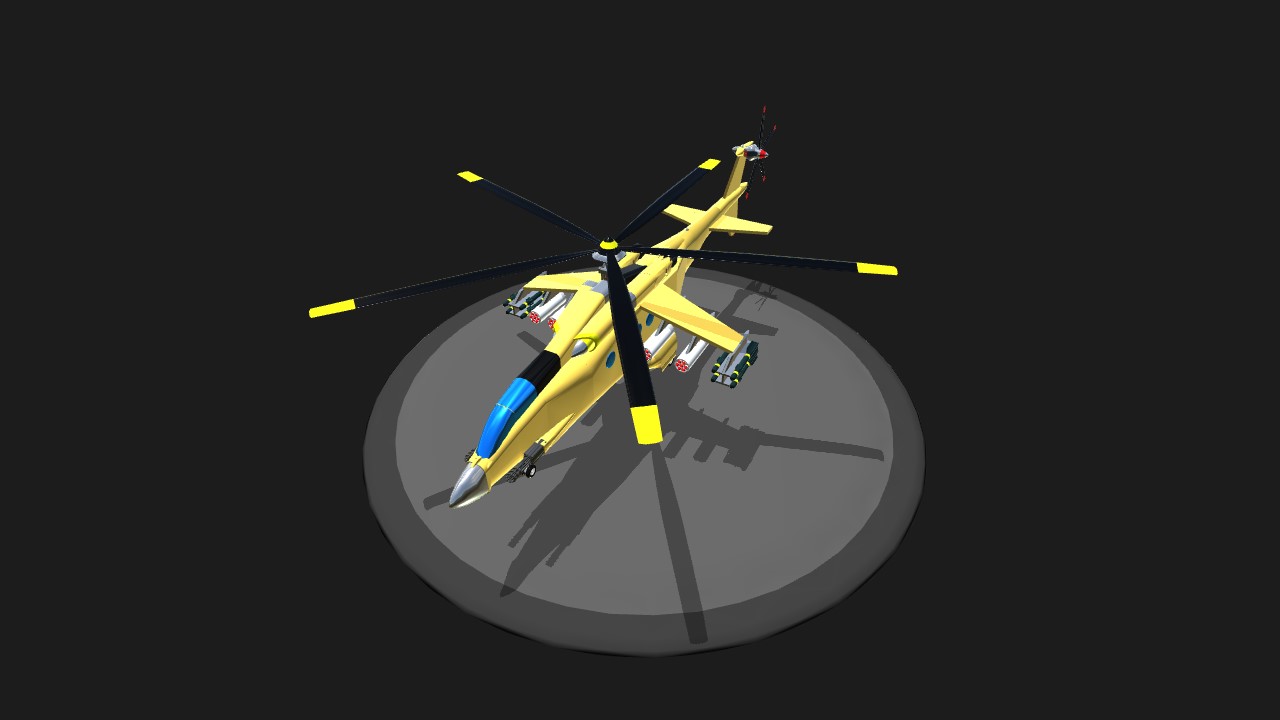
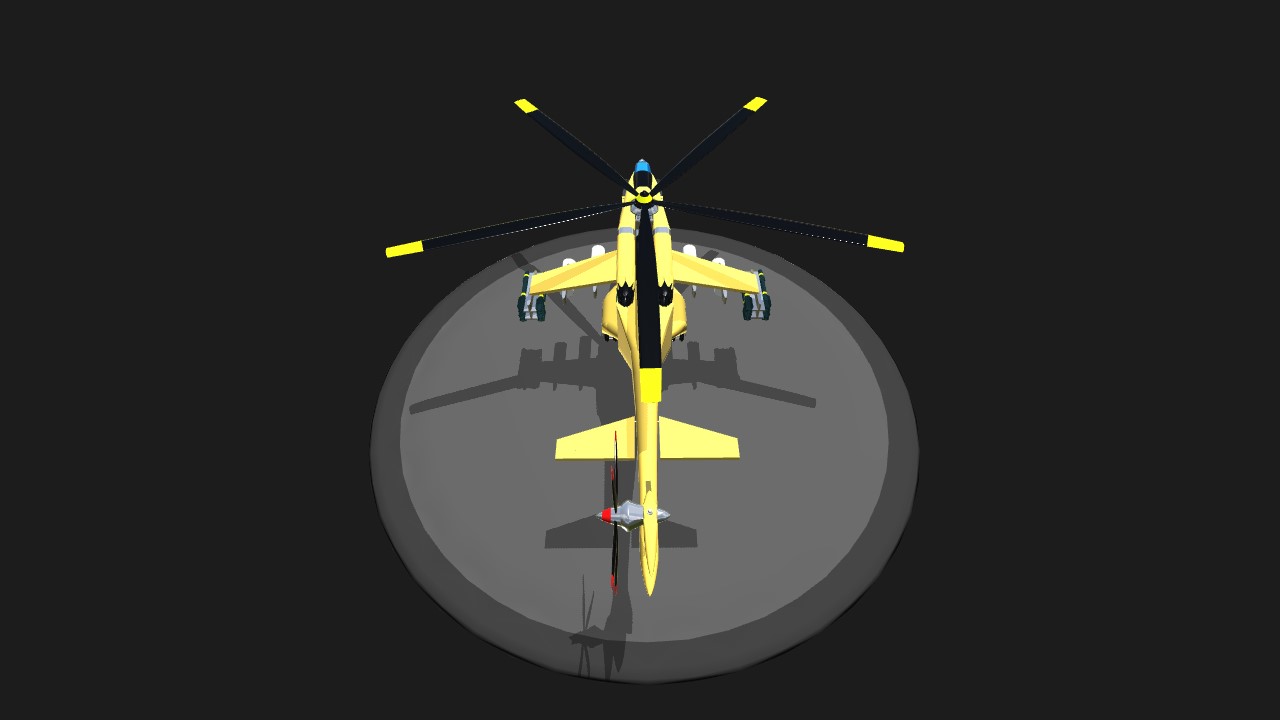

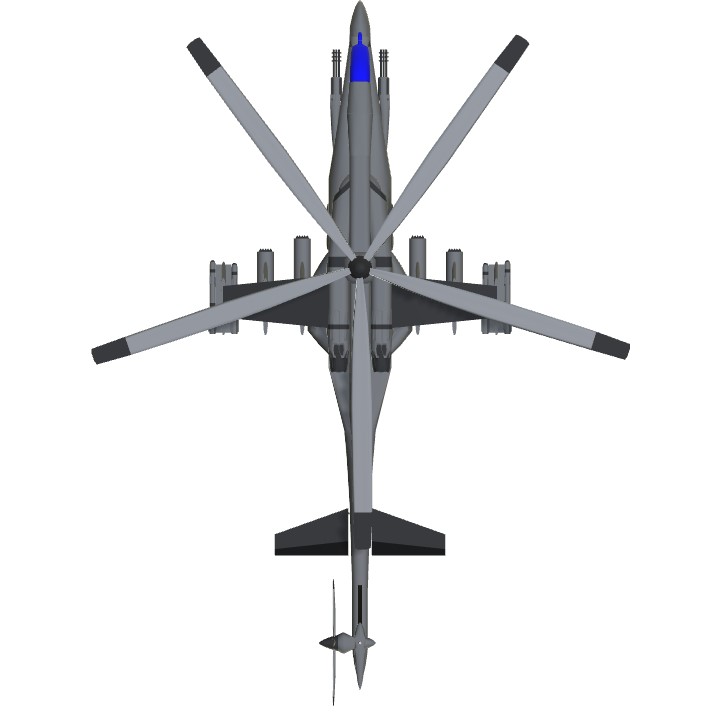
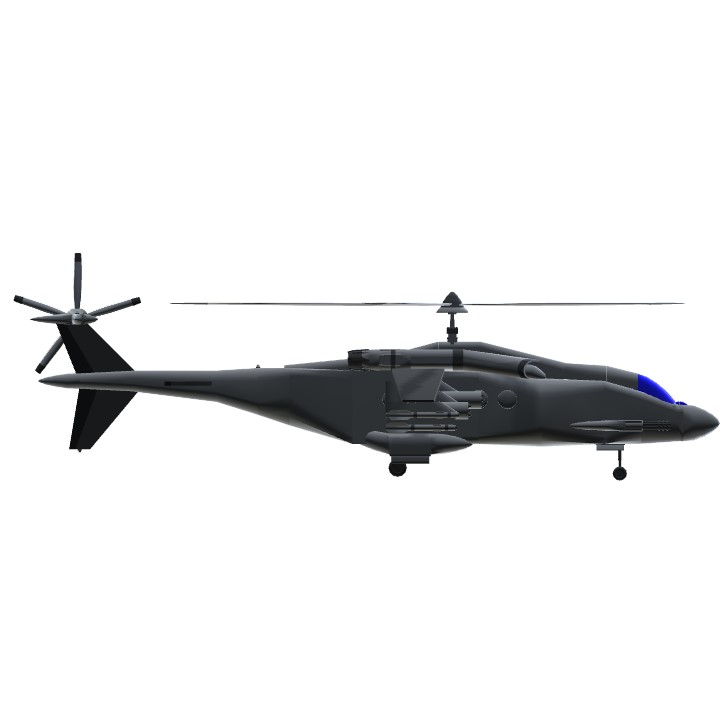
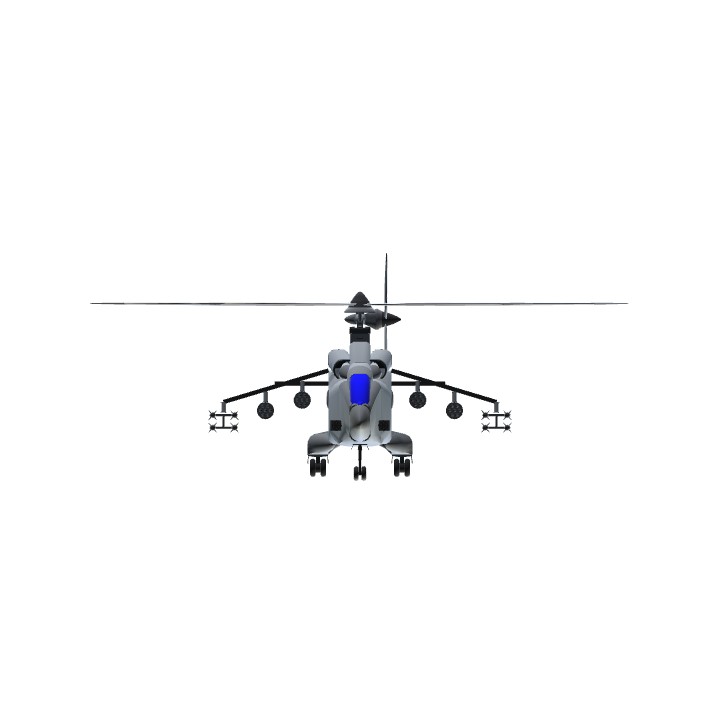
11/10